
Exploring the untamed wilderness of Lower Zambezi


The Lower Zambezi valley, with its majestic escarpment sloping down to meet the river, protects a massive rift in the earth’s crust through which the Zambezi River flows. Over millennia, mineral-rich volcanic soils deposited by the river have given rise to lush vegetation, while the many channels and oxbow lakes attract an array of wildlife.
The 4,092 km² Lower Zambezi National Park lies on the northern bank of the Zambezi River in south-eastern Zambia. Until 1983, when the area was declared a national park, it was the private game reserve of Zambia’s president, which has resulted in the area being protected from the ravages of mass tourism, leaving it a relatively pristine wilderness.
The park itself is surrounded by a much larger Game Management Area (GMA), there are no fences between the two and animals are free to roam throughout the entire area. One of the primary attractions of the Lower Zambezi National Park and the surrounding GMA is its remote location. The escarpment along the north acts as a physical barrier and the bulk of the park consists of hilly ground. As a result, most of the game is concentrated on the valley floor, in the flat alluvial plains beside the deep, wide river.
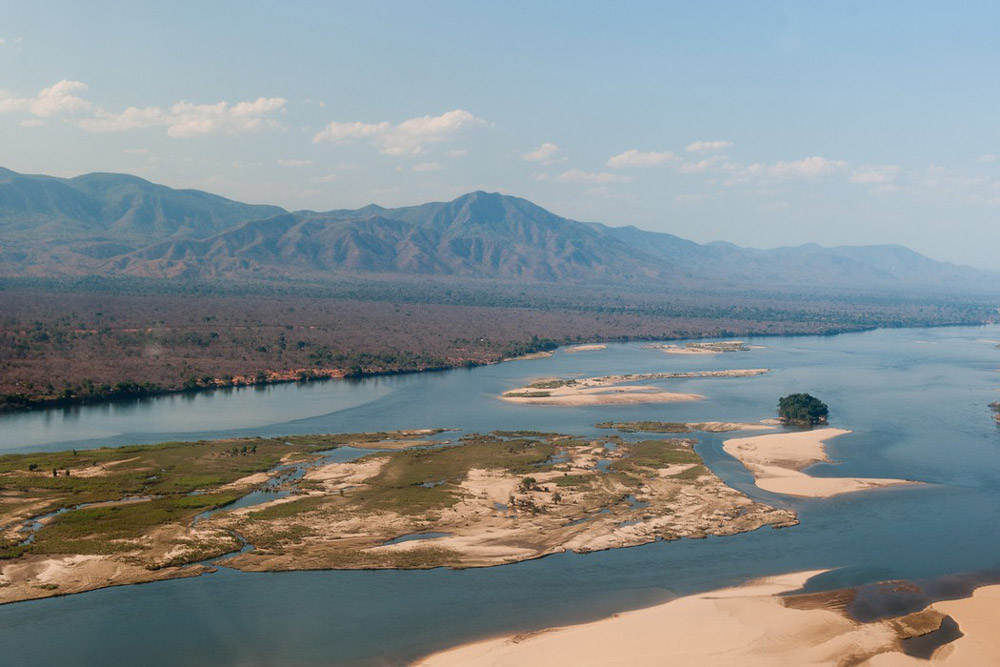
The Lower Zambezi is relatively undeveloped, its beauty lies in its very wildness. The diversity of animals is not as extensive as some other big parks, but the opportunities to get up close to the game are spectacular. The park lies opposite the famous Mana Pools National Park in Zimbabwe, so the whole area on both sides of the river is a massive wildlife sanctuary.
Most visitors arrive by boat or light aircraft. The park’s relative inaccessibility limits tourist numbers. Unless you have some pretty good off-road driving experience and come at the right time of year, it is not advisable to attempt a road trip.
We had felt a bit of an adventure was in order and so had decided to drive…
Five hours from Lusaka, three of which were spent on dirt, we finally reached our destination. A slight ‘issue’ with dirty fuel and a clogged fuel filter had slowed us down just long enough for me to (single-handedly) eat nearly all the snacks I had packed for our road trip… something I was to regret when we arrived at camp and were greeted with a delicious lunch!
Classical Baines
Baines’ River Camp is located just upstream of the park’s boundary, inside the GMA, with spectacular views over the Zambezi River. Named for Thomas Baines, the famous 19th-century artist and explorer, the small and intimate lodge captures the feel of a bygone era with its classic colonial-style buildings and casual elegance.
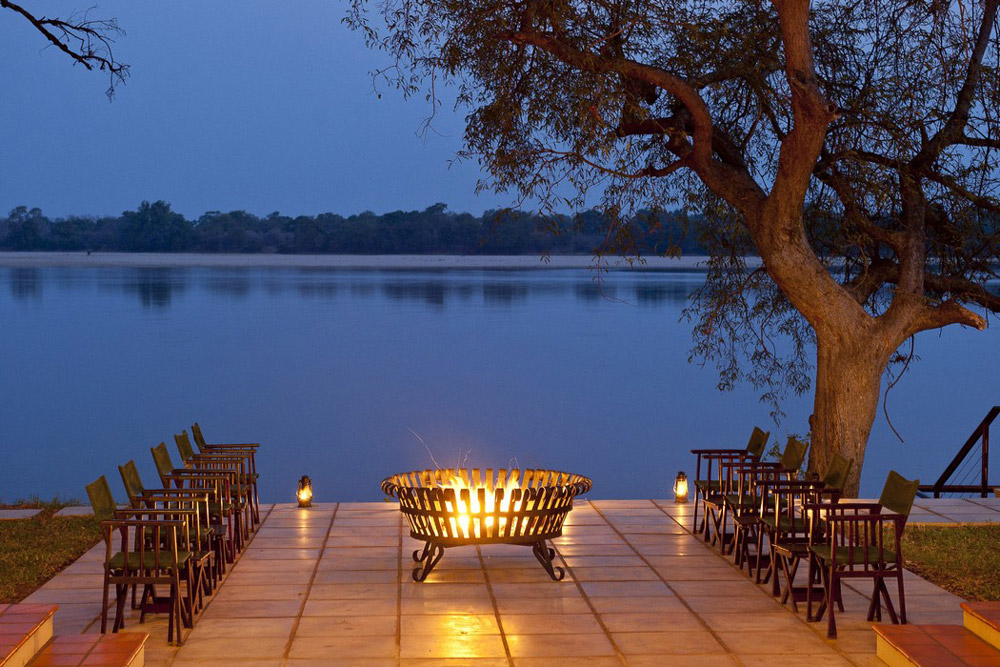
Straight after lunch, we were off onto the river. It was wonderful to be back with all the sights, sounds and smells of the bush around us. Our boat ride took us downstream into the national park, past elephants with babies and pods of hippos, to where our canoes were ready and waiting on the riverbank. Leaving the main river, we headed off down a channel fringed with overhanging jackalberry and Natal mahogany trees. We would re-join the main river at 7 km.
This was some of the easiest canoeing I’ve ever done. I had paddled for all of five minutes when our guide, Luke, informed me that I could put down my paddle, as he would steer and the current would carry us through the channel – so much for getting in any exercise to burn off all those ‘car snacks’ and enormous lunch!
We spent a tranquil afternoon drifting downriver, past banks teaming with birdlife, stopping briefly on an island for a drink to watch the sun set on our first evening in this beautiful park.

Just as the sun was going down, we heard the hum of an aeroplane approaching and were perfectly positioned to see the regular patrol flight of the Conservation Lower Zambezi (CLZ) plane passing directly over our heads. The park is home to lion, hippo and wild dog, who are all listed as ‘Vulnerable’ or ‘Endangered’ under the IUCN Red List of Threatened Species and are endangered by poaching and the illegal trade in wildlife products.
To counteract this, the CLZ – a non-profit NGO – was set up in 1994 to work to preserve the wildlife in the national park and the GMA (a total area of approximately 9,000 km²). CLZ provides technical advice and support to the Department of National Parks and Wildlife (DNPW), runs an environmental education programme targeting over 2,500 young scholars a year, and runs a Community Support Programme focusing on human-wildlife conflict mitigation in the neighbouring GMA.
After 20 years of working with local wildlife authorities in the Lower Zambezi valley, the CLZ is now one of the oldest, most well-established and well-recognised conservation organisations in Zambia.
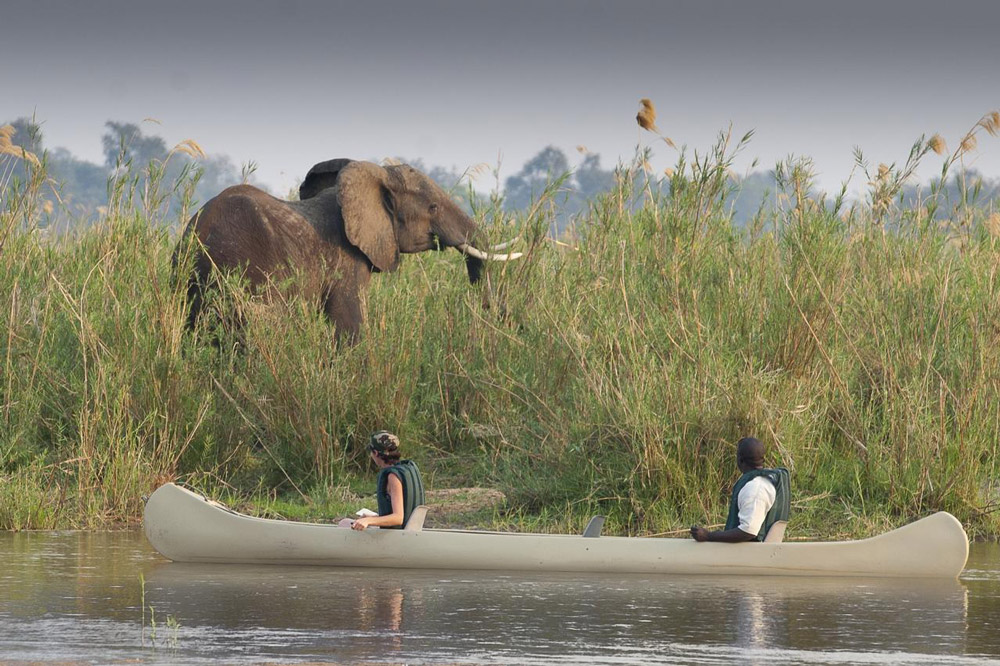
In the morning we awoke to a river as smooth and shimmering as shot silk, stretching out in front of us, across to the opposite bank. The air was crisp as we set off in the boat, rugged up in blankets, mist rising off the water.
Around 20 minutes and 30 km later, we reached the park’s boundary, stopping briefly while our driver went to sort out entry formalities. A little while later we disembarked from the boat, into our waiting vehicle, setting off for an early morning game drive in the Lower Zambezi National Park.
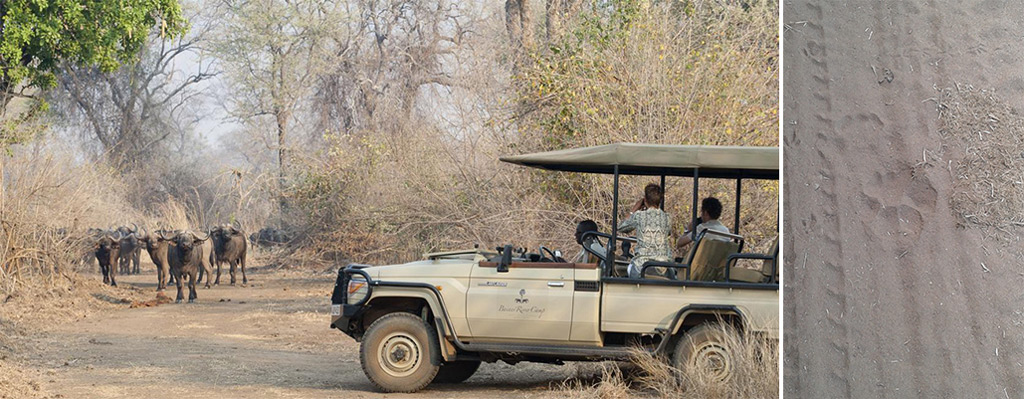
Within minutes we heard the roar of a lion and saw its footprints on the sandy road. Around the bend we heard baboons raising an alarm call, warning the rest of the troop of a leopard in the thicket. Carrying on we found, in quick succession, the spoor of hyena and then wild dog… with this, we knew we were back in the bush.
A myriad of birds surrounded us; 378 species have been recorded in the park. Red-billed and yellow-billed hornbills swooped through the trees like clowns with their oversized beaks, black crakes flitted on the riverbank, a woolly-necked stork preened itself in the shallows, and one of my personal favourites, the ground-hornbills strode across the landscape like they were heading to an important meeting.
Luke pointed out what was new to me, but apparently not uncommon locally, a pair of collared palm-thrush.
Rounding the bend in a dry riverbed, we stumbled upon a lioness sleeping in the deep wheel ruts left behind in the sand by previous vehicles. The guides knew her and said she had two young cubs that she must have hidden out of sight nearby. We watched and waited for some time, but aside from some tiny lion footprints in the sand, we didn’t see a trace of the cubs. Clearly, they were obeying mum’s orders to stay out of sight.
Spotting some vultures swirling high in the sky, we headed in their direction, eventually reaching the spot they seemed to be concentrating on. The trees were weighed down by lappet-faced and white-backed vultures, but we could find no trace of any fresh kill. We did, however, find the ripe-smelling, month-old carcass of an elephant, rather curiously alongside an equally desiccated crocodile carcass. Luke filled us in on the story: Apparently, a month earlier, the elephant had died of natural causes, the crocodile, attracted by the promise of a feed, had walked from the river to feast on the elephant meat, only to meet his fate in the jaws of a leopard.

The rest of our morning was a journey through the picturesque riverine landscape of ebonies, leadwoods, acacias and fig trees, past Natal mahoganies, ilala palms, winter thorns and battle-scarred baobabs, until reaching an oxbow lake, luminously green with water hyacinth, where we stopped for a bush breakfast.
A pod of bobbing hippos watched us and we, in turn, watched an old buffalo chomping his way morosely through mouthfuls of the unappetising water hyacinth.
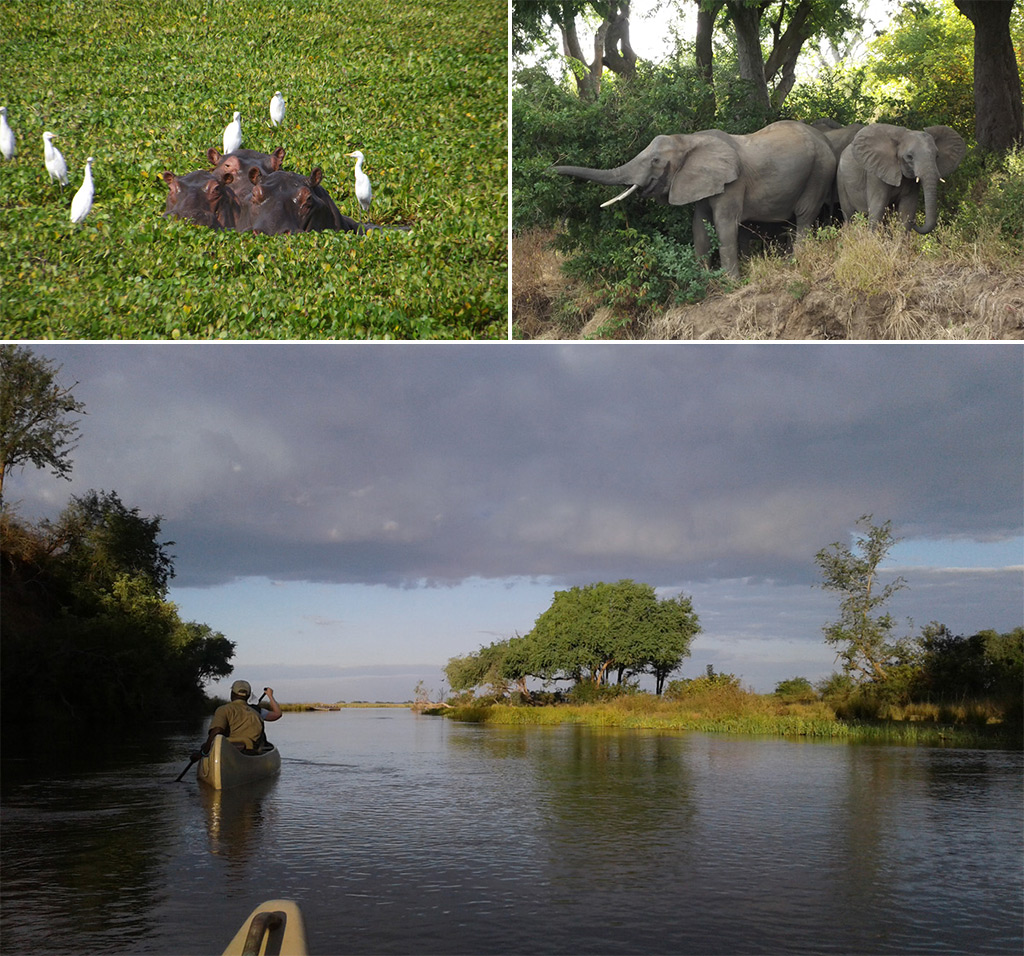

Sophisticated Anabezi
The next morning came, and we felt as though we were heading off into the unknown – no maps, no signposts and, frankly, no idea. All we knew was that we had approximately 50 or 60 km to drive. We didn’t see another soul along the way, but after three hours and a couple of slightly nerve-wracking wide stream crossings, we arrived at Anabezi Luxury Tented Camp.
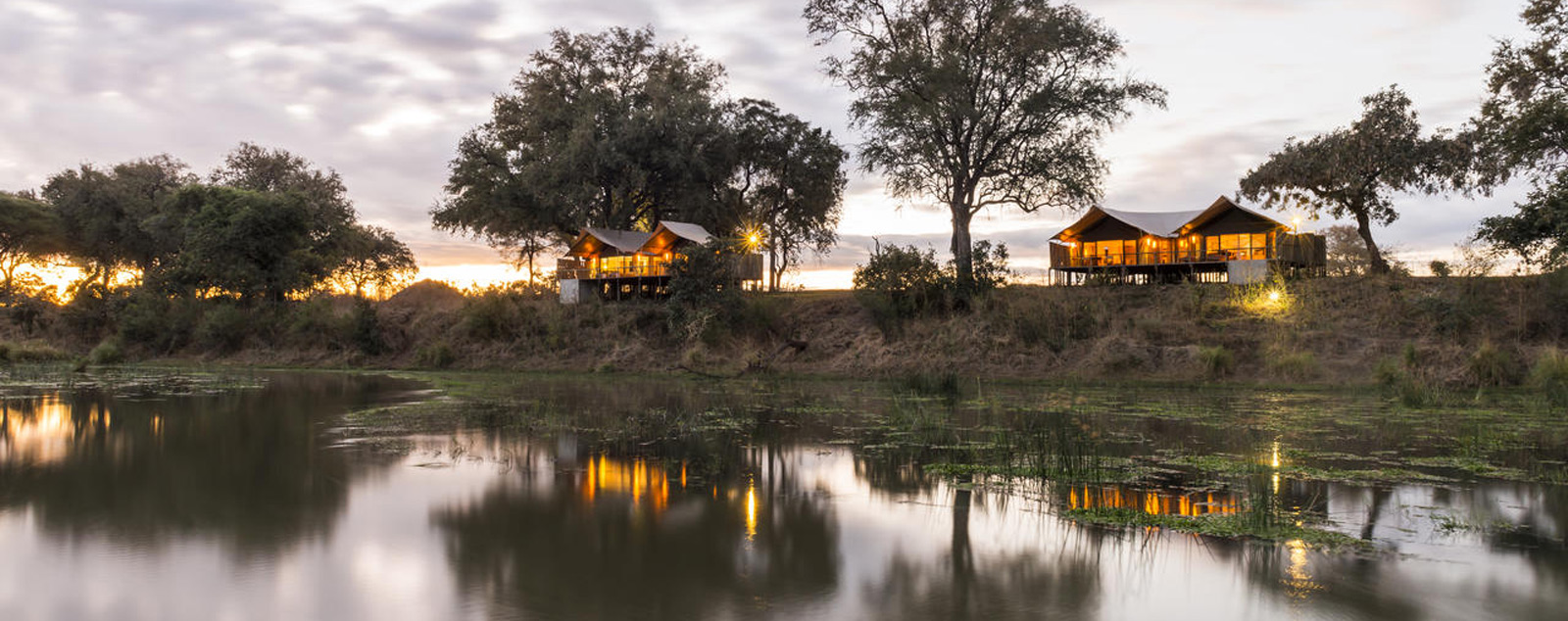
The camp is located in the stunning and remote, eastern end of the Lower Zambezi National Park, where the Zambezi River and the Mushika River floodplain meet. I could see why the area had been chosen to build the governor’s personal retreat in the days of the British Colony, and we saw the nearby ruins of the now derelict building while out on a drive.
Anabezi is built on raised timber decks and walkways, perched on top of the riverbank with superb views in front and the Zambezi escarpment as a beautiful backdrop.
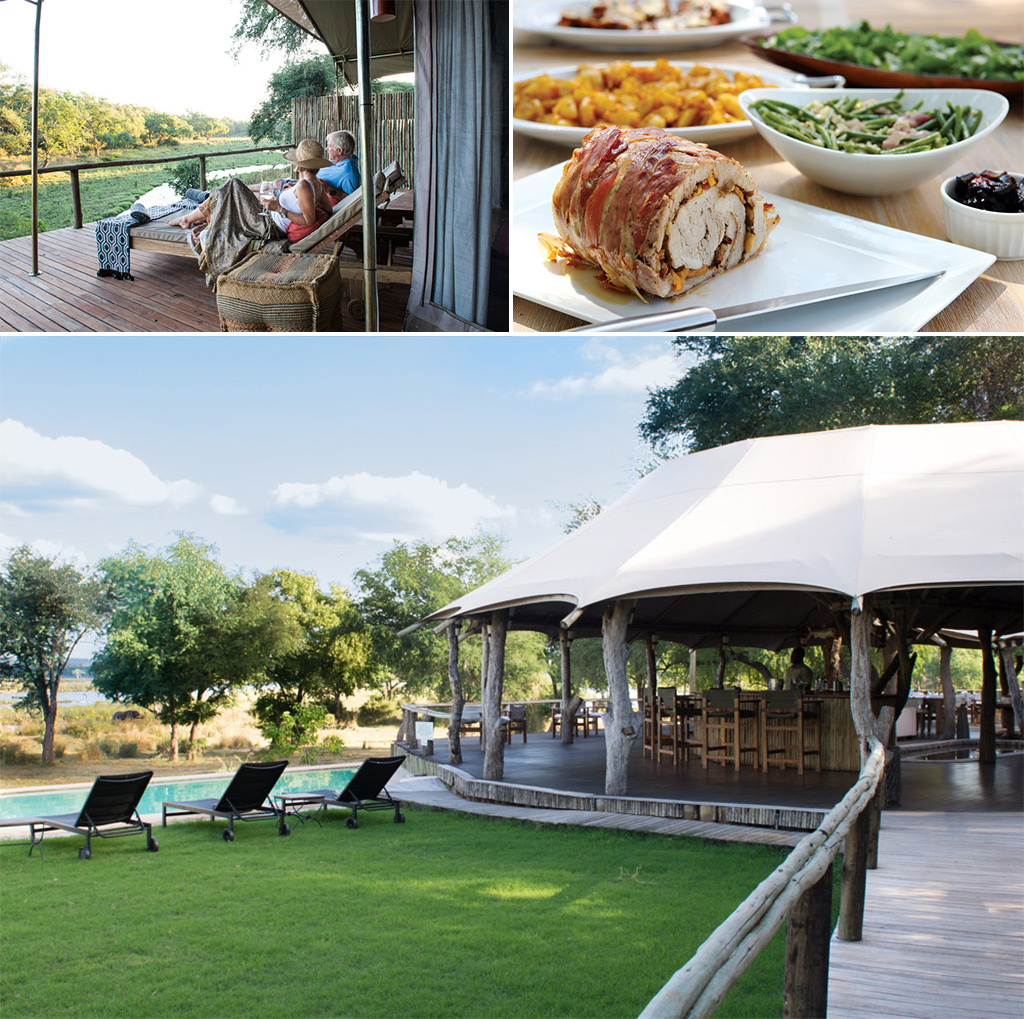
From the moment you arrive at Anabezi, there is an atmosphere of understated, unpretentious luxury, with a quiet air of sophistication. We arrived in time for a quick freshen up, and then lunch followed with a ‘power nap’ before heading out on a game drive.
Sometimes on safari, it is easy to forget about the little things, but out on our drive, after we’d had our fill of lions, waterbucks, impalas and other fabulous sightings, Prisley, our guide, switched off the engine and the lights and we sat and absorbed the night sounds of the bush.
The cool air physically pulsated with the chorus of crickets, baboons moaned and complained to one another as they settled down for the night, hippos grunted in the distance… this was the true essence of the bush.

It wasn’t only on game drives that we were surrounded by wildlife. All around us in camp we found animals, from a pair of mating lions that had set up their ‘honeymoon suite’ just 60 metres from our room (and remained there ‘honeymooning’ every 20 minutes for the next three days) to elephants just below the verandah at lunchtime and later tearing branches off trees behind us in the dark while we ate our dinner. Hippos had late-night pool parties in the channel below our room.
Walking back to my room from lunch, I was chaperoned by a squirrel who ran the entire length of the elevated wooden walkway, barely a metre ahead of me, spectacularly leaping into a tree at the last minute. While under the walkway a family of warthogs were busy digging up the grass.
We spent a wonderful morning walking in the winter thorn forest not far from camp, accompanied by herds of impala, waterbuck families and an array of birdlife. On the way back to camp we had a spectacular sighting of a leopard resting high in a tree. It was such a clear view that we could even see the two puncture wounds in her shoulder that could have been fatal if they had been a few inches to the right. Eventually, the leopard, bored with our presence, stretched, yawned and climbed down from the tree before sauntering off.
Not to be outdone by the leopard, just before we reached camp, we found a male lion, one of the area’s resident males, lying calmly and conspicuously by the side of the road. After allowing us a leisurely look, he calmly got up and disappeared into the long grass.

Waking from an afternoon nap, I watched from our tent as an elephant pushed his forehead against the trunk of winter thorn tree, persistently shaking the tree to dislodge its seedpods. Once the seedpods had ceased to fall, he delicately collected his prize, one at a time, with the tip of his trunk and transferred them to his mouth.
Watching him eat reminded me that it was time for yet another of the camp’s delicious meals… this time afternoon tea!


Intimate Royal Zambezi
Our drive back across the park was a lot less daunting now that we knew where we were going. Back in the GMA, we were now staying at Royal Zambezi Lodge, a picturesque, thatched lodge situated at one of the broadest points of the river.
Setting out from the lodge, a sedate afternoon boat cruise soon turned into an unexpected game viewing opportunity when we found seven lions resting on the riverbank. Five sub-adult males and two young females lazed on the banks of the Zambezi. Two of the young males lay right on the edge of the overhanging riverbank, watching us intently, not remotely shy or timid. This particular pride, the guides told us, had swum across the river from Zimbabwe, looking to claim new territory.
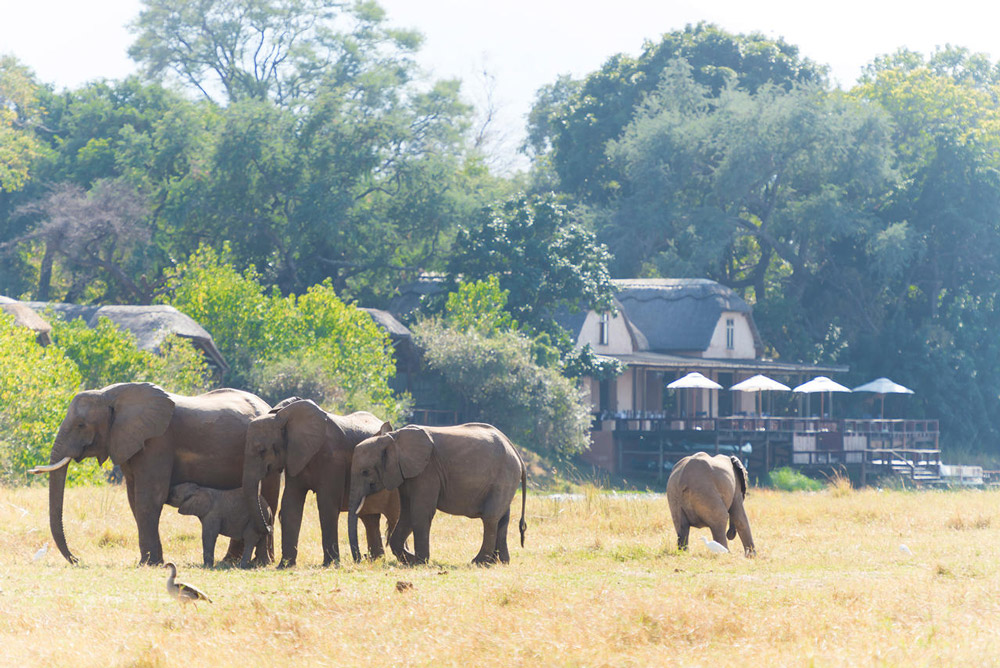
Worn out from the ‘rigours’ of safari life, I decided to take the next day off from boats, vehicles and early morning wake up calls. Waking at 5.30 am – just long enough to push my husband out the door and off on another fishing expedition – I allowed myself a sleep-in, a cup of tea in bed and a leisurely breakfast alone while all the other lodge guests were out doing various activities.
But a day of relaxing did not mean a day devoid of wildlife. While I may have decided not to go to the animals, that did not stop them from coming to me! A precocious young vervet monkey staged an ambush, helping itself to my unattended bread roll while I was distracted at lunch.
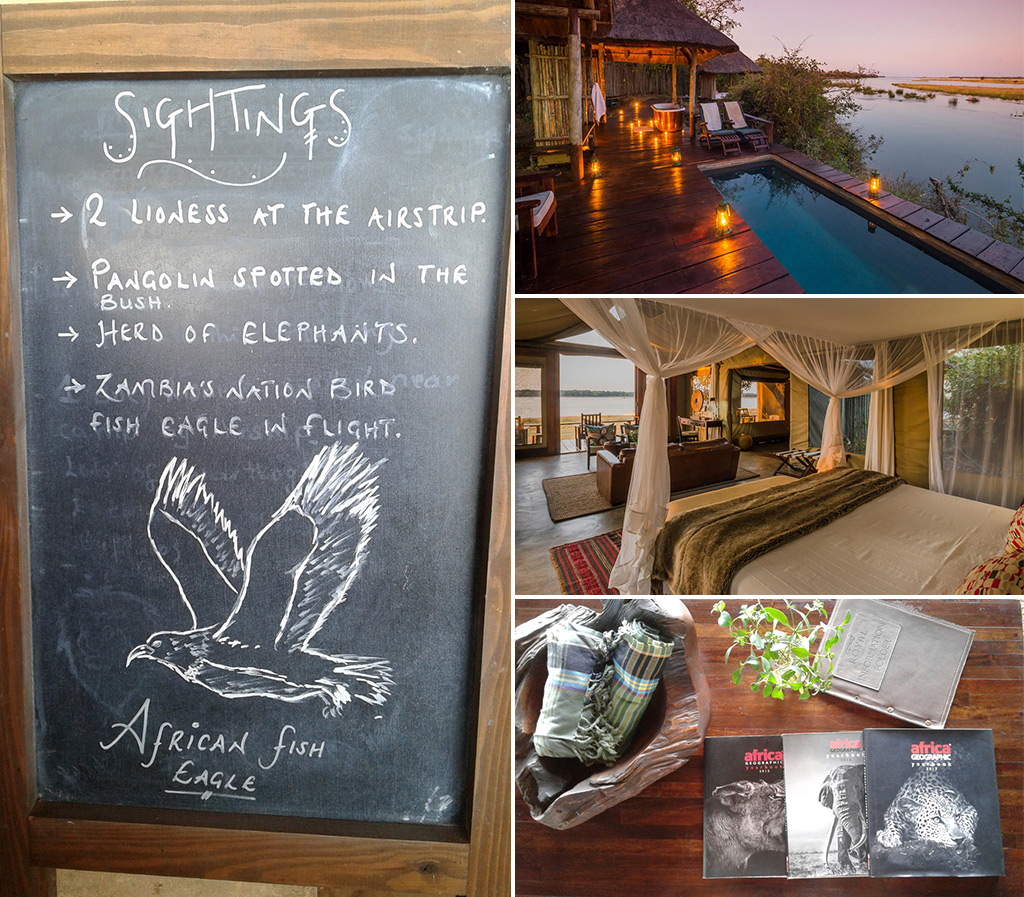
After lunch, I retired for a nap on the daybed located on our private verandah that jutted out over the wide riverbank. An enormous monitor lizard surprised me by suddenly appearing from underneath the verandah. Not remotely intimidated by me, it took its time thoroughly investigating the area before ambling off.
Once ensconced on the daybed, I had a rather pleasant nap, only stirring to check what was making the rustling noises beneath the deck. This turned out to be two extended families of warthogs, with three large elephants close by.
Our last night in the Lower Zambezi was one to remember. Driving a short distance, downstream from the lodge, we arrived in a clearing where a long, lantern-lit table was set up for a bush dinner – accompanied by a full moon and a blanket of shimmering stars. Lions roared across the water, and we were serenaded by an ‘African choir’ of the lodge staff.
Halfway through dinner we heard splashing behind us in the river and turning saw a lone elephant wading across the river, heading our way, a silvery stream of reflected moonlight in its wake.
I had visions of diners scattering in all directions, but the elephant reached a deep channel in the river and disappeared underwater. Resurfacing, he changed course, heading downstream and leaving our dinner undisturbed — a magical end to a magical trip.
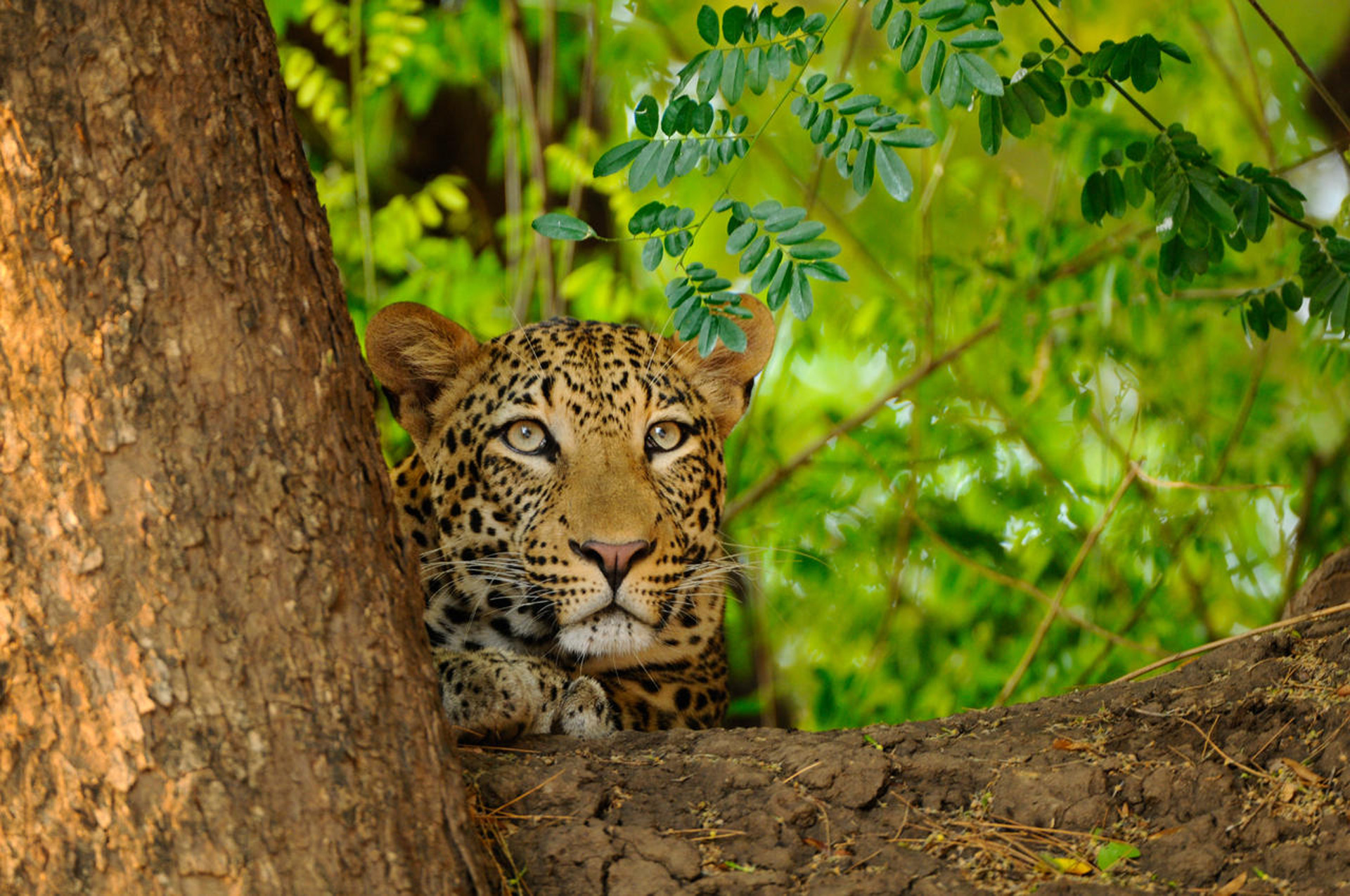
WHERE TO STAY
For accommodation options at the best prices visit our collection of camps and lodges: private travel & conservation club. If you are not yet a member, see how to JOIN below this story.
BAINES’ RIVER CAMP
This true colonial-style safari lodge, named after the famous artist and explorer Thomas Baines, offers a wide variety of land and water-based safari activities in and around the Lower Zambezi National Park. The camp can accommodate 20 guests in eight individual suites and a two-bedroom family unit, each decorated with rich, classical fabrics and colourful kelims. Each of the colonial-style safari chalets commands its own view of the Zambezi River from a comfortably furnished, private veranda.
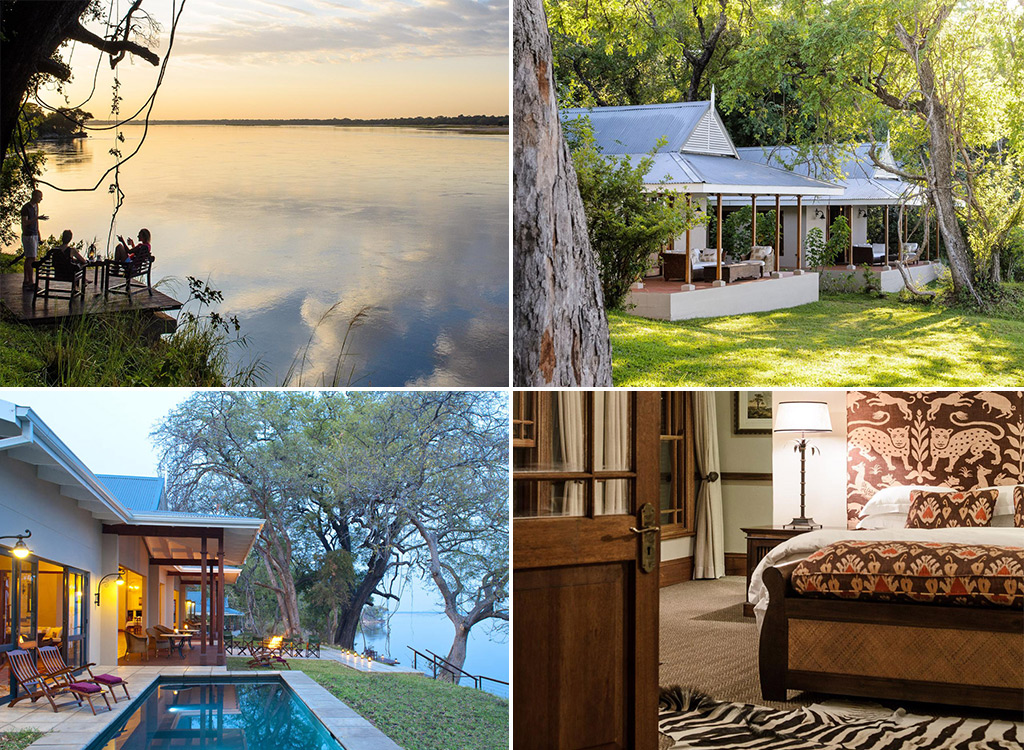
ANABEZI LUXURY TENTED CAMP
Anabezi Luxury Tented Camp is a 24-bed camp located on the banks of the Zambezi River at the lower end of the Lower Zambezi National Park. The camp comprises of two common areas and 12 spacious luxury tents on raised timber platforms at the edge of a ridge providing magnificent views of both the Zambezi River and Mushika River floodplain. All luxury tents are equal in size and décor, and each common area boasts a swimming pool, viewing deck, lounges, bar and dining area.
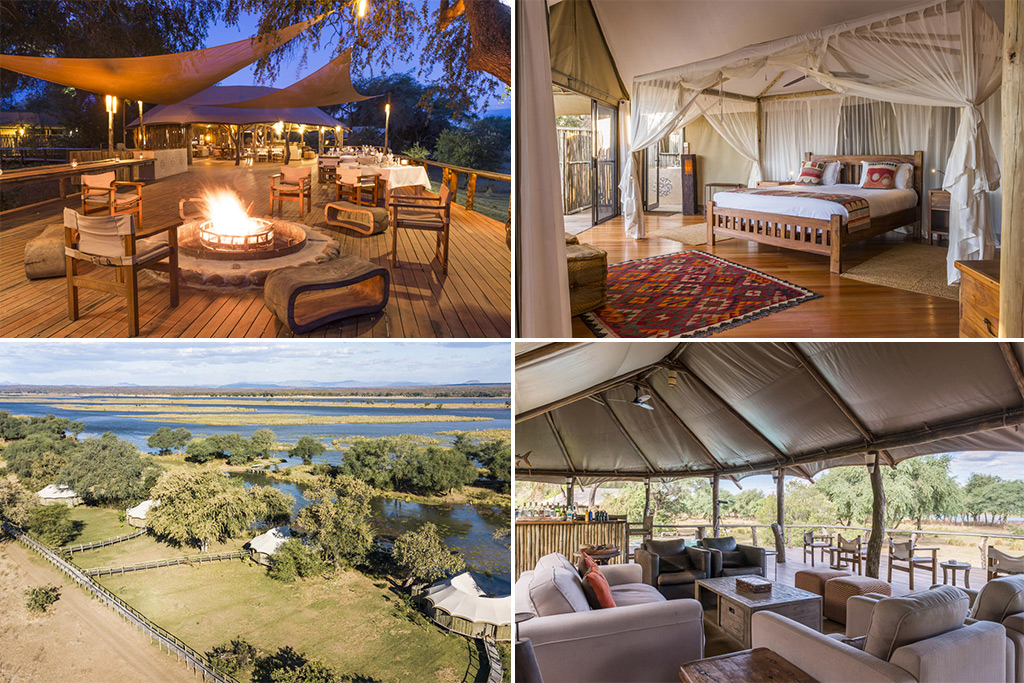
ROYAL ZAMBEZI LODGE
Royal Zambezi Lodge, a spacious but intimate privately owned lodge, is situated on the banks of the mighty Zambezi River just minutes from the Lower Zambezi National Park and directly opposite Zimbabwe’s famous Mana Pools World Heritage Site. Royal offers the ultimate in luxury and cuisine while enjoying and participating closely in the sights and sounds of the African wilderness. The 15 airy canopied canvas tents nestle under mature trees, and each is positioned for maximum enjoyment of the surrounding views and complete privacy. Natural tones, luxurious textures and comfortable armchairs create a secluded retreat.
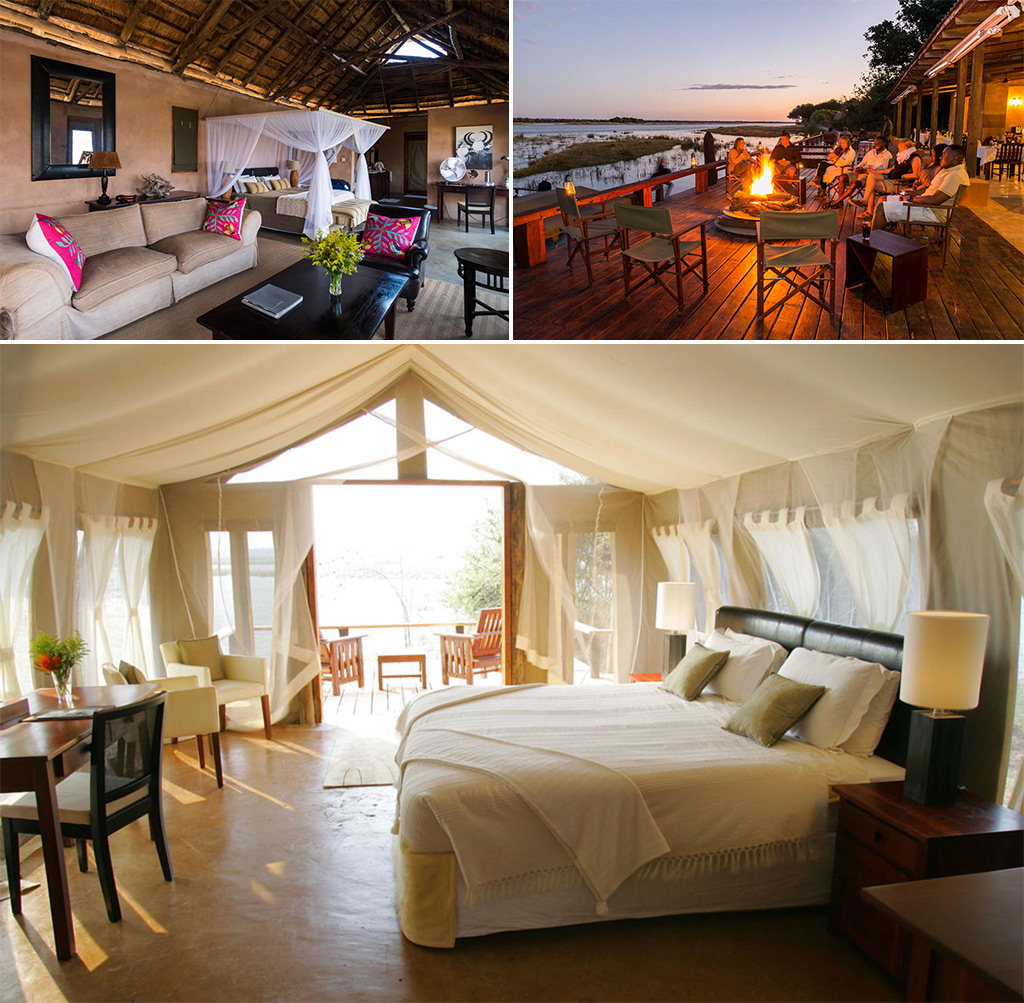
ABOUT THE AUTHOR, SARAH KINGDOM

Travel writer, mountain guide and mother, Sarah Kingdom was born and brought up in Sydney, Australia. Coming to Africa at 21, she fell in love with the continent and stayed. Sarah guides on Kilimanjaro several times a year and has lost count of how many times she has stood on the roof of Africa. She has climbed and guided throughout the Himalayas and now spends most of her time visiting remote places in Africa. She runs a cattle ranch in Zambia with her husband when she is not travelling.
To comment on this story: Login (or sign up) to our app here - it's a troll-free safe place 🙂.![]()






